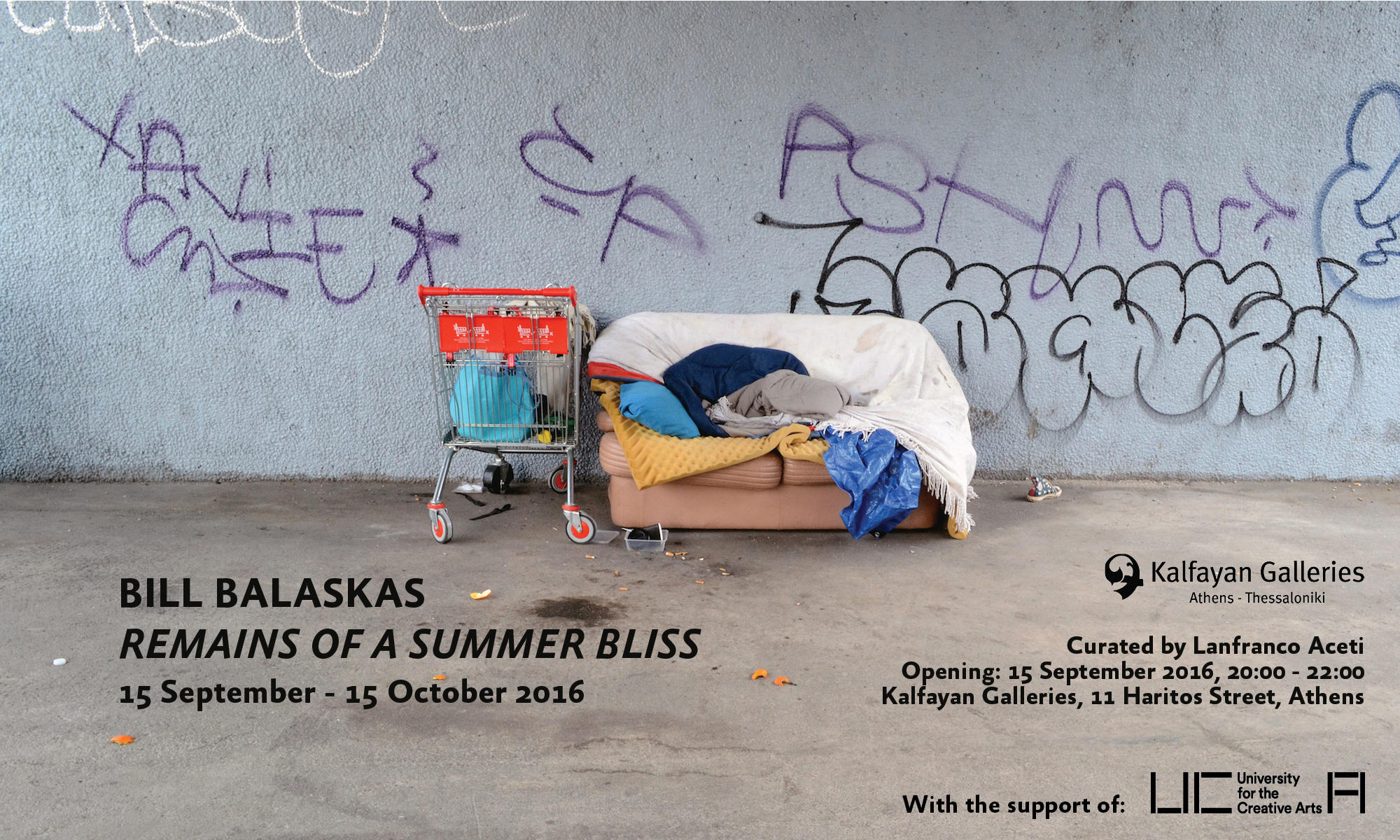I am very happy to announce the new exhibition Remains of a Summer Bliss by Bill Balaskas that I am curating at the Kalfayan Galleries, Athens – Thessaloniki, from September 15 to October 15, 2016. The premiere of the show is on September 15 from 20:00 to 22:00 at the Kalfayan Galleries on 11 Haritos Street, Athens. The exhibition will present a new body of work by Balaskas that examines the contemporary social, political and financial crisis as a state of being and no longer as a temporary fluke of the bonanza that capitalism is supposed to deliver.
The works of art, and therefore the exhibition, fluctuate between a state of utopia and dystopia, functioning as the signposts of a melancholia of things that are ending and the dread of the worst that is yet to come.
Despite the subject matter, Balaskas’ works of art find a poetical and aesthetic balance which offer the possibility to those in the know of finding a smile as well as a route to unpack the hidden and complex narrative shrouded in the apparent aesthetic of the quotidian. The artworks hint and remand to each other, constructing a ‘sentiment’, a ‘feeling’ of other things to come and our role in them as spectacularized viewers.
It is for these reasons that I am having a blast writing the curatorial essay, which, notwithstanding the complexity of the issues, or because of it, is providing me with a cathartic experience which exorcizes the contemporary social, political and financial struggles. Athens, once again, is the measure of all things Mediterranean, providing an understanding of the struggles the world faces and of the return of the empire.
Historically, curatorial statements and analyses of works art—even when they embody socio-political struggles—are constructed around the expectation of a rational approach that has to function as a guide and introduction to an artistic body of work. Particularly in the Anglo-Saxon empirical techno-scientific understanding of the world, there is the expectation of words to be measuring up to a common logical understanding, which has the duty to transform even art into a practical, measurable and monetizable asset.
This curatorial essay is, instead, more of an illogical statement, an emotional analysis, a partisan argument and an aesthetic return of a barbarian to its Mediterranean barbarian roots, of a foreigner in its homeland who has the impossibility of recognizing the past while dreading the future, and with no longer an acceptable present. It is as if Medea (in the complexity of Pasolini’s interpretation of mythological reality) was here writing, no longer about reality but rather the perception of an inner reality distinct from the hyper-mediated perception of what an external reality should be and how it should be consumed by the masses.
I chose Medea and her counterpart Jason as representatives of two different worlds, the barbarian and the civilized, the utopian and the dystopian, to clearly represent that there can be at times two coexisting and diametrically opposite perceptions of reality, both of which are simultaneously true and can exist only as warring factions in order to define each other’s meaning and modus vivendi, or in this case, modus moriendi.
Balaskas’ works of art traverse this landscape with poetry, whimsicality and a carefully staged flightiness which by presenting the quotidian and our superficial approach to it, ‘short-circuit’ the modalities of consumption and interpretation. The artworks, the exhibition space, the curatorial staging, all conspire to generate in the viewer an emotional response to the final moments at the end of the last day of summer.

